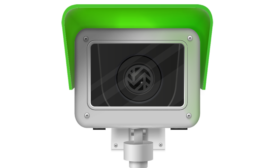Home » Keywords: » RMR (Recurring Monthly Revenue)
Items Tagged with 'RMR (Recurring Monthly Revenue)'
ARTICLES
Wireless access control solutions offer ease of installation, increased flexibility, scalability, and cost-effectiveness to end user installations.
Read More
SDM EXCLUSIVE
SDM 100: Mostly Strong, With A Focus on Video
The top SDM 100 companies reported that the market in 2023 — whether they deemed it average or excellent — was largely defined by a few key factors: inflation, an emphasis on video technology advancements and the continuing workforce shortage.
May 6, 2024
Insiders Dish Proven Strategies for Growing RMR
Leading security dealers and integrators explain the essential strategies and insights that drive success in the realm of recurring monthly revenue.
May 1, 2024
Why Rising PERS Market Is Ripe for Opportunity
The convergence of technology and an aging population seems to make personal emergency response systems (PERS) a perfect fit for integrators to grow RMR. But use cases go far beyond the elderly.
May 22, 2023
SDM EXCLUSIVE
The 2023 SDM 100: Solving the Labyrinth
SDM 100 companies reported a wide variety of experiences in 2022, very much depending on the path, location and unique set of challenges that made up their business conditions last year. As a group, however, they continue to rise to the challenges put before them and find their individual path to success.
May 2, 2023
Tech Solutions
Wasabi Surveillance Cloud Provides ‘Bottomless’ Video Storage for End Users
March 6, 2023
Be in the forefront of security intelligence when you receive SDM.
Join over 10,000+ professionals when you subscribe today.
SIGN UP TODAY!Copyright ©2024. All Rights Reserved BNP Media.
Design, CMS, Hosting & Web Development :: ePublishing
















